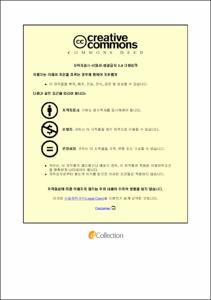원격 허혈 전 조건화가 생체 간이식 기증자의 수술 후 간 기능에 미치는 영향
- Abstract
- Abstract
Background: Liver ischemia/reperfusion injury (IRI) is associated with poor outcomes after liver resection. In addition, hepatectomy itself can cause inflammation response and oxidative stress related to postoperative liver injury, hepatic regeneration. Remote ischemic preconditioning (RIPC) has been shown to have protective effects on liver IRI. However, the impact of RIPC focused on living donor has not been elucidated. In this study, we investigated the effects of RIPC on postoperative liver function in donors after living donor hepatectomy.
Methods: A total of 148 living liver donors were enrolled in this study. They were randomly assigned into two groups: Group I (Control, n=73) and Group II (RIPC, n=75). In the RIPC group, three cycles of 5-minute RIPC in the upper limb were performed before hepatectomy. Postoperative liver function test was assessed by measuring aspartate aminotransferase (AST), alanine aminotransferase (ALT), total bilirubin (TB), and prothrombin time INR (PTINR). The incidence of delayed recovery of hepatic function (DRHF), postoperative liver regeneration index (LRI) and postoperative complications were assessed during the first 7 postoperative days.
Results: RIPC group showed higher maximal and 3rd postoperative day PT INR (1.6 [1.5; 1.7] vs. 1.7 [1.6; 1.8], P= 0.045 and 1.5 [1.4; 1.6] vs. 1.6 [1.5; 1.6], P=0.047). However, there were no statistically significant differences in maximum AST, ALT, and total bilirubin values between the control group and the RIPC group (152.0 [129.0, 180.0] vs. 145.0 [118.5, 188.0], 152.0 [126.0, 196.0] vs. 148.0 [120.5, 197.0], and 2.7 [2.0; 3.2] vs. 2.4 [2.0; 3.0], P=0.568, P=0.775, and P=0.344, respectively). There was no statistically significant difference in LRI at postoperative 1 month (94.9 [61.4;131.2] vs. 83.3 [47.7;117.7], P=0.182). The incidence of DRHF was higher in the RIPC group (0% vs. 6.7%, P=0.074) without statistical significance.
Conclusion: RIPC has no effects on postoperative liver function or liver regeneration index in living liver donors.
|Abstract (Korean)
서론: 허헐-재관류 손상은 간 절제 이후 악화된 예후와 연관되어 있다고 알려져 있으며 간 절제 자체도 염증반응과 산화 스트레스를 유발해 수술 후 간 손상 및 재생에 영향을 줄 수 있다. 원격 허혈 전 조건화는 간의 허혈-재관류 손상에 대한 보호 효과를 갖는다고 밝혀졌으나, 현재까지 생체 간 기증자에 초점을 맞춘 원격 허혈 전 조건화 연구는 잘 알려져 있지 않았다. 따라서 본 연구에서는 원격 허혈 전 조건화가 생체 간이식 기증자에게 미치는 영향을 알아보고자 한다.
연구 대상 및 방법: 총 148명의 생체 간이식 기증자를 대상으로 이중 맹검, 무작위 대조 연구를 시행하였다. 이들은 무작위로 2가지 그룹에 배치되었고 대조군 73명, 원격 허혈 전 조건화군(치료군) 75명으로 나뉘었다. 치료군 에서는 상완에서 압력계를 이용해 각 5분 간 3회의 원격 허혈 전 조건화를 마취유도 후, 간 절제 전에 시행하였고, 대조군 에서는 상완에 압력계만 감아둔 상태로 이를 시행하지 않았다. 수술 후 첫 7일 동안 AST, ALT, 총빌리루빈, PTINR 등을 통해 간 기능을 평가하였으며, 간 기능 회복 지연 (delayed recovery of hepatic function)의 발생률과 술 후 1개월의 간 재생 지수 및 술 후 합병증 등을 살펴보았다.
결과: 수술후 AST, ALT, 총 빌리루빈 의 최대값은 두군 간에 통계적으로 유의한 차이가 없었다. (152.0 [129.0, 180.0] vs. 145.0 [118.5, 188.0], and 152.0 [126.0, 196.0] vs. 148.0 [120.5, 197.0], 2.7 [2.0; 3.2] vs. 2.4 [2.0; 3.0] P=0.568, P=0.775, and P=0.344 respectively). 그러나 수술 후 3일째의 PTINR 값 및 7일중 최대값은 RIPC군에서 통계적으로 유의하게 높은 값을 보였다 (1.6 [1.5; 1.7] vs. 1.7 [1.6; 1.8], P= 0.045, 1.5 [1.4; 1.6] vs. 1.6 [1.5; 1.6], P=0.047). 간 기능 회복 지연 발생률은 경계 수준의 유의성을 갖고 RIPC군에서 높은 결과를 나타내었으며 술 후 1개월에 측정한 간 재생 지수는 유의한 차이가 없었다 (94.9 [61.4;131.2] vs. 83.3 [47.7;117.7], P=0.182).
결론: 원격 허혈 전 조건화는 생체 간 기증자의 수술 후 간 기능, 간 재생 지수에 영향을 미치지 않는다.
- Issued Date
- 2018
- Awarded Date
- 2019-02
- Type
- Dissertation
- Alternative Author(s)
- Kang Jiwon
- Affiliation
- 울산대학교
- Department
- 일반대학원 의학과
- Advisor
- 송준걸
- Degree
- Master
- Publisher
- 울산대학교 일반대학원 의학과
- Language
- eng
- Rights
- 울산대학교 논문은 저작권에 의해 보호받습니다.
- Appears in Collections:
- Medicine > 1. Theses (Master)
- 파일 목록
-
-
Download
 200000171272.pdf
기타 데이터 / 470.02 kB / Adobe PDF
200000171272.pdf
기타 데이터 / 470.02 kB / Adobe PDF
-
Items in Repository are protected by copyright, with all rights reserved, unless otherwise indicated.